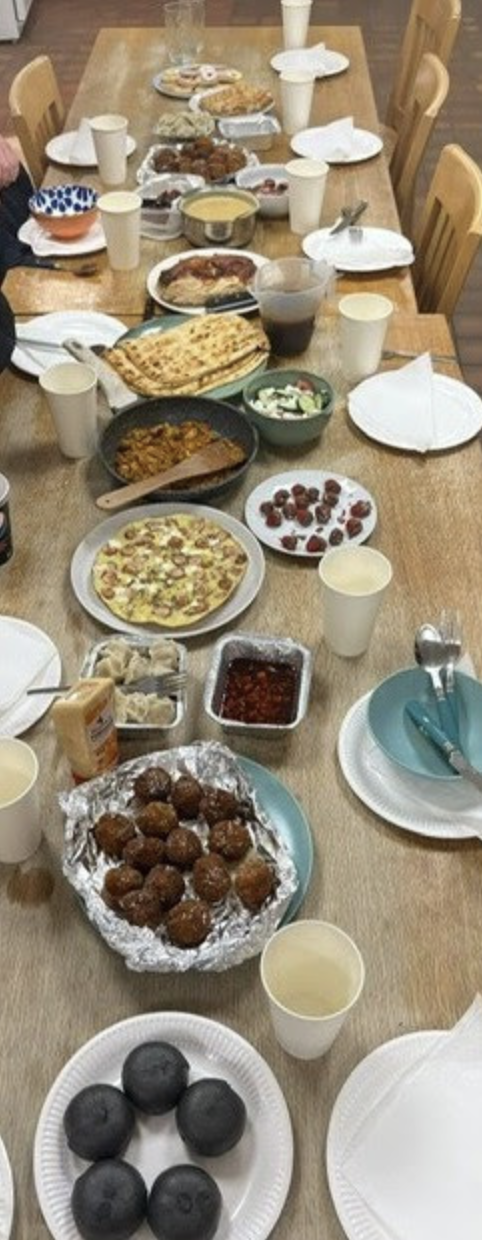Thanksgiving Celebrating Beyond Our Borders
Thanksgiving—around the world, there is a tendency to associate that holiday solely with the United States, but we must not forget that our Canadian neighbors to the north also celebrate the feast, albeit in October rather than in November. That said, Thanksgiving is a quintessentially North American holiday. Unlike many federal holidays in this country that commemorate either the war dead, the cessation of wars or American war heroes, Thanksgiving is the celebration of a picnic that took place in Plymouth, Massachusetts in 1621. It was hosted by the Pilgrims, a small band of English settlers who had arrived by sea a year earlier. That picnic was born out of gratitude for the gift of a bountiful harvest, and despite the tragedies the settlers had faced on their journey across the Atlantic and throughout the bitterly cold New England winter. Of the 102 Pilgrims, a religious sect seeking relief, first from the English and then from the Dutch, who boarded the Mayflower in Plymouth, England in September of 1620, only 53—including a child born on the voyage across the Atlantic and another after reaching land—were alive a year later to celebrate. That picnic was an example of the virtue of gratitude in action—not only to God, but also to the settlers’ neighbors, the Wampanoag people, inhabitants of the land in southern Massachusetts since long before the arrival of the Pilgrims. It was the indigenous people who displayed the virtue of generosity, by sharing their food with the settlers and by introducing them to native produce—corn, beans, pumpkins, and other squashes—as well as game and fish. The pilgrims returned the generosity by inviting a hundred of their neighbors to that first Thanksgiving meal. For more than four hundred years since that inaugural event, Thanksgiving has been an annual celebration throughout this country, and in 1863, President Abraham Lincoln declared it a national holiday.
To this day, the virtues of gratitude and generosity imbue the spirit of Thanksgiving. Tradition has it that before the family and guests take their first bite of the meal, one or more people at the dinner table offer thanks and gratitude—for family, for friends, for loved ones no longer with them, for new members of the family, and for those who are guests at the table. The role that generosity plays in the American Thanksgiving dinner is often exemplified by the number of guests seated at the table—friends who might be unable to get home to their own families, or college friends of family members, or even someone who might be alone on that day.
American college students overseas are seldom able to get home for Thanksgiving because that fourth Thursday in November is a regular workday for nearly every other country in the world. Offices are open and college classes are in session. Recently, I met with Ella, one such student in London, and her Thanksgiving “solution” was both creative and heartwarming. She entered The Queen’s College, Oxford in the fall of 2022 to study law. Oxford of course draws students from every corner of the earth, and within a few weeks, eight young men and women with diverse backgrounds and homelands had become friends and before long they were a tightly knit group. As Thanksgiving approached, Ella suggested that the team create its own Thanksgiving dinner, with each student contributing to the meal with a dish that represented his or her country of origin—there was Hungary, Greece, India, Hong Kong, Singapore, the United States (Ella) and two were from England.
The success of that inaugural non-American Thanksgiving led to a repeat the following year. By then, a few more students had joined the group, while not a single person had left it. However, without the oversight of a maitre d’ of sorts, that second year’s dinner consisted entirely of a variety of meat dishes—a bit undiversified nutritionally. As the scholastic workload became more intense—Ella describes Oxford as a “marathon at a sprint’s pace—social time became less available. However, not one member of the pact— Spain and Scotland having joined— missed a single Thanksgiving dinner. This year a Northern Irish/Canadian student will join the festivities. The style is potluck, and to offer a “balanced” diet, a circulated Google doc has become part of the process. There’s always Hungarian soup, and from the Singaporean student, endless dumplings—beef, pork, and vegetarian. Paella has come on the menu since the Spanish student joined. But the Scottish student who joined last year brought perhaps the most “creative” dish—fried haggis spheres. For those readers who may never have had the pleasure of sampling that “delicacy,” allow your imagination to get the better of you by picturing the ingredients: sheep’s heart, liver and lungs—also referred to as ofal—which are boiled, then minced, then mixed with with onions and oatmeal, and a smattering of spices (to mask the flavor, perhaps?) and stuffed into a casing made from cow intestines. It was served as an appetizer—an interesting choice of word.
Ella graduated from Queen’s College this past June and is now enrolled at the London School of Economics and Political Science in a one-year program to receive her master's degree in law. About half of the group is taking a fourth year at Oxford, so this year promises to carry on the tradition of a cosmopolitan Thanksgiving at Queen’s College under the auspices of a generous, grateful, and full of life American student. I like to think that there are other “Ellas” in universities around the world, and that students in far flung places are appreciating the spirit and the meaning of an American Thanksgiving.
Some of the dishes prepared for the celebration of Thanksgiving at Queen’s College, Oxford by Ella and her friends from around the world.

